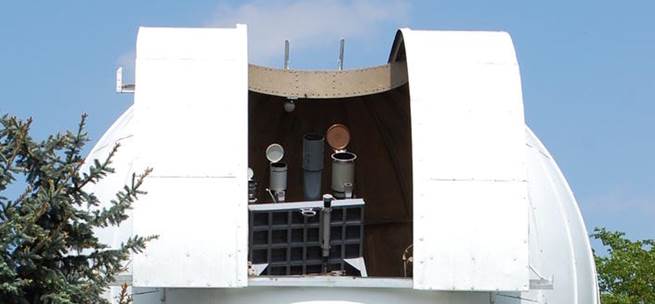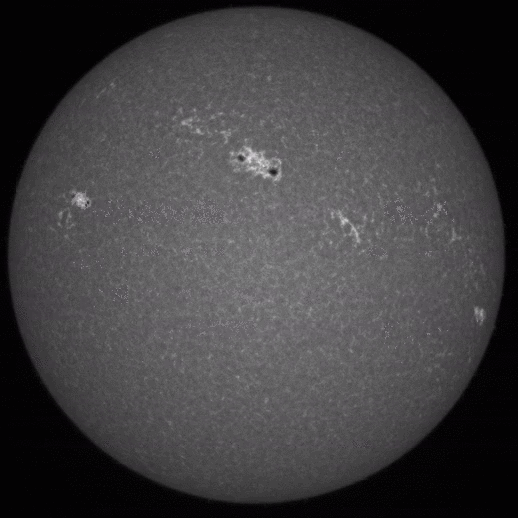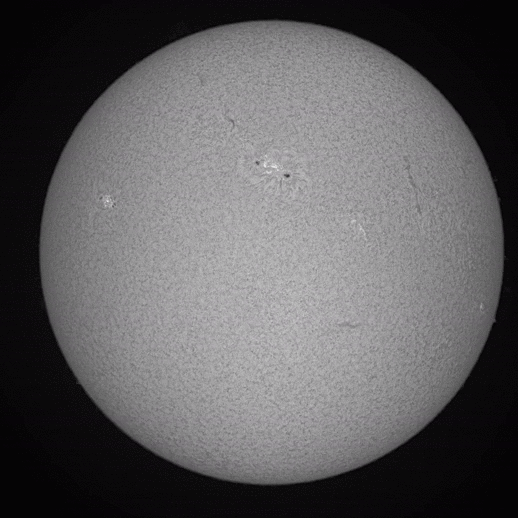Emil Kraaikamp is a famous astrophotographer working as an IT specialist at the Royal Observatory of Belgium. A few years ago, he wrote the image processing software AutoStakkert!2, which is now used by astrophotographers worldwide and has been featured in the September 2016 issue of Sky and Telescope, one of the principal journals for the amateur astronomical society.
Two weeks ago, on 28 March, Emil was 'lucky' enough to capture a plane transit event during high cadence observations with the USET solar telescopes (Uccle Solar Equatorial Table). These observations were part of a joint solar observation campaign with satellites such as SOHO (SUMER ), IRIS and HINODE , and other groundbased instruments.

The USET platform (image above) contains 4 telescopes: 2 for white light observations (one for drawings, one for CCD imaging), one for H-alpha observations (a line in the red part of visible light), and one for Ca-K (a line in the blue part of the visible light). As Emil was recording the Sun in both H-alpha and Ca-K, a plane transited the solar disk, as can be seen in the movies underneath (Top: Ca-K ; Bottom: H-alpha). The two sunspot groups that are prominently visible are NOAA 2644 (near the center of the solar disk) and NOAA 2645 (to the left).


Emil explains that because of the longer exposure time in H-alpha (+/- 80ms), the airplane is a bit blurry there, but Ca-K was able to freeze the movement quite well with just 5 ms of exposure per frame. The two fuzzy stripes to the right of the airplane are condensation trails ("contrails") from the aircraft's exhaust (see the Contrailscience website for more info). As can be seen in the Ca-K clip underneath, the airplanes can also be tracked, although not for very long and they obviously need to exactly pass the solar disc.
![]()
The remaining challenges are now to apply the image processing techniques to the entire dataset that was captured during the more-than-a-week-long observation campaign. (Un)fortunately, the weather was quite good, so Emil and his team expect to have quite a bit of fun with the several Terabytes of data waiting to be processed. With Brussels National Airport nearby, there's a good chance there will be more planes adorning the USET solar images!





